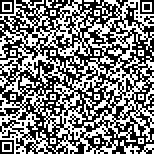下载中心
优秀审稿专家
优秀论文
相关链接
摘要

植被冠层含水量CWC(Canopy Water Content)和植被地上部分含水量VWC(Vegetation Water Content)对于植被健康状况和土壤干旱监测具有重要意义。本文联合PROSAIL辐射传输模型和植被水分指数NDWI(Normalized Difference Water Index),发展了一种简单、通用性较好的低矮植被CWC和VWC反演方法,可实现中、高空间分辨率下的CWC和VWC估算。首先对PROSAIL模型输入参数进行敏感性分析,明确各参数对模型输出反射率的影响机制,以优化PROSAIL模型输入参数设置并生成低矮植被的反射率模拟数据。基于模拟数据,计算了4个植被水分指数NDWI(860,1240)、NDWI(860,1640)、NDWI(1240,1640)和NDWI(860,970)用于反演低矮植被CWC和VWC。基于模拟数据的结果表明,4个植被水分指数与ln(CWC)都存在明显的线性关系,基于该关系建立了CWC估算模型。该模型可以直接用于低矮植被CWC估算,并通过VWC与CWC之间的经验关系间接计算得到VWC。模型模拟结果也表明,由于NDWI(860,1640)和NDWI(1240,1640)高度相关(R2=0.99),两者可以提供相似且相对较好的低矮植被CWC估算精度。基于地面实测数据的验证结果与基于模拟数据的结果表现出很好的一致性,即基于NDWI(860,1640)和NDWI(1240,1640)估算的VWC都有相似且较高的精度,决定系数(R2)都为0.88,均方根误差(RMSE)分别为0.4558 kg/m2和0.4380 kg/m2。利用Landsat 5 TM数据对NDWI(860,1640)估算效果的验证结果显示,模型估算CWC与地面实测CWC的R2为0.84,RMSE为0.1342 kg/m2,估算VWC的RMSE为0.5651 kg/m2。本文提出的基于NDWI(860,1640)和NDWI(1240,1640)的CWC/VWC估算模型可被用于低矮植被的长势监测和干旱监测,为低矮植被覆盖地表的土壤水分反演提供高质量的植被水分信息。
As the dominant component by weight of live vegetation, vegetation moisture is one of the main factors determining plant photosynthesis, respiration, and biomass. Based on the type of remote sensed data used, retrieval algorithms for vegetation moisture retrieving algorithms fall into two categories, i.e., microwave-data-based methods and optical-data-based methods. However, microwave-based methods are always characterized by low spatial resolutions and often have difficulty in separating out vegetation and soil signals. On the contrary, because of the high spatial resolution and good sensitivity to green vegetation, optical remote sensing techniques have been the baseline method for estimating Vegetation Water Content (VWC) of short vegetation (i.e., Canopy Water Content, CWC). Here, we try to set up a universal, accurate and easy-to-apply way of retrieving CWC/VWC of short vegetation based on simulations from the PROSAIL model and generalized normalized Difference water index (NDWI), i.e., spectral indices taking the form of the NDWI formula.The new proposed method is based on PROSAIL model and four NDWI variants, i.e., NDWI(860,970), NDWI(860,1240), NDWI(860,1640) and NDWI(1240,1640). First, the parameter sensitivity analysis is carried out to determine their different influence mechanisms on the output reflectance and to optimize the PROSAIL model's input parameters. After that, canopy reflectance simulations are generated for short vegetation. According to the simulated reflectance, simulations of the four NDWI variants are derived, which were used to construct relationships with the simulated CWC and VWC of short vegetation. It is found that, instead of the linear relationship derived in previous studies, the simulated CWC/VWC is best approximated as an exponential function of NDWI. Following the analysis of the PROSAIL-generated results, a newly NDWI-based scheme is proposed for estimating CWC for short vegetation. Furthermore, VWC can also be estimated by combining the empirical relationship between VWC and CWC.Results derived from simulations show that the four NDWI variants are all linear related to ln(CWC), which were further used as CWC retrieving models. Moreover, the CWC retrieving models can also be used for VWC retrieving by combining the empirical relationship between VWC and CWC. Results derived from simulations also indicate that since NDWI(860,1640) and NDWI(1240,1640) are highly correlated (R2=0.99), both of the two variants can provide similar and relatively good CWC estimation accuracy. The validation results based on ground measurements show good consistency with simulated results, i.e., the VWC estimates from NDWI(860,1640) and NDWI(1240,1640) variants have high accuracy with both R2=0.88 and RMSE respectively of 0.4558 kg/m2 and 0.4380 kg/m2. The validation results based on Landsat 5 TM datasets also show that the R2 between CWC estimates and CWC ground measurements is 0.84, with a corresponding RMSE of 0.1342 kg/m2,while the RMSE between VWC estimates and VWC ground measurements is 0.5651 kg/m2.The proposed NDWI-based scheme for retrieving CWC/VWC of short vegetation is easy to implement and highly accurate. It can also be applied to agriculture for crop growth monitoring and drought indication. The estimation framework is also useful for CWC/VWC estimation of other short vegetation types. Moreover, since crop cover remains a challenging land cover for satellite-based soil moisture retrieval, this method can also be used to improve the quality of cropland vegetation information available as an ancillary input data for microwave-based soil moisture retrieval algorithms.

